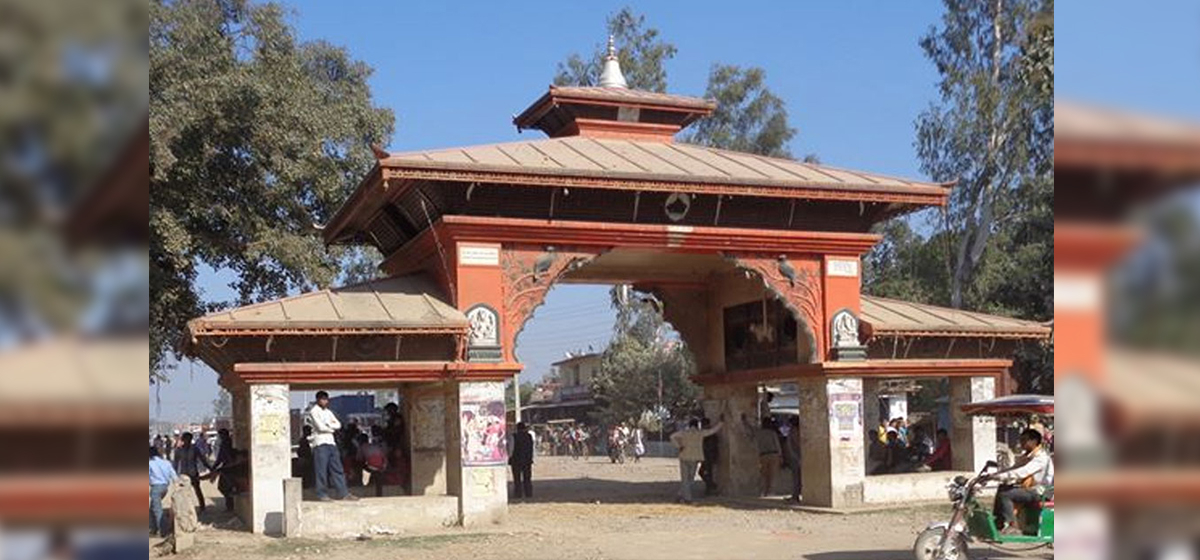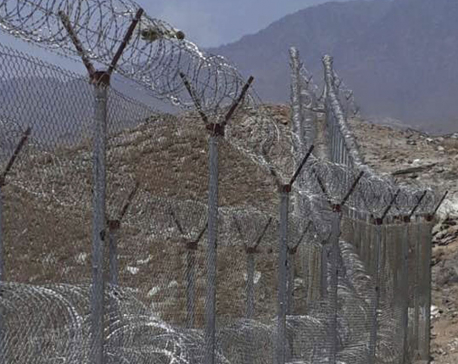
OR
#OPINION
Nepal’s Southern Border Has Become An Open Regional Crossroads
Published On: March 15, 2024 08:30 AM NPT By: Hari Prasad Shrestha

In a post on ‘X’, Home Minister of India Amit Shah said, ‘It (Government) has decided to construct a fence along the entire 1,643-kilometer Indo-Myanmar border. To facilitate better surveillance, a patrol track along the border will also be paved”.
Recently, a Nepali movie titled “Kandetar” was released. This movie raises a similar issue of open borders, with the campaign of ‘barbed wire along the border by the people, for the people’, to generate awareness about the border issues and instill the feeling of patriotism. The main message of the movie is that the country's soil, sovereignty, and country's history are the biggest things. The film raises the issues of violence, interference, and looting that frequently occur along the border.
In actuality, as a consequence of open borders, Nepal is going through predicaments of human trafficking, refugee problems, serious crimes and illegal activities by unhindered entry of perpetrators, border land encroachments and harassment to border inhabitants, economic dependency, inflow of cheap labor force and so on. The central government of India also admits that open borders are becoming more problematic as fake currency, criminal activities, and anti-social elements get shelter in each other’s country, which is going to be a big problem not only for Nepal but also for India in the near future. A report of the US Department of State on Terrorism 2021 on Nepal says how dangerous is the open border between Nepal and India, which India does not want to regulate. The report highlights that the open border regime with unregulated movement across the Nepal-India border heightens the risk of international terrorism. Compared to India, Nepal has realized the seriousness of open borders due to rising incidents of illegal activities and terrorist movements through the open borders. Some serious incidents through open border are as follows:
In the early 1990s, more than 100,000 Bhutanese refugees settled in seven UN supervised camps in eastern Nepal after Bhutan forcefully evicted Nepali speaking Bhutanese and compelled them to enter Nepal via the Indian territory. Similarly, Rohingya refugees came to Nepal for asylum from Rakhine state of Myanmar in the 1990s and 2012. They came via eastern Nepal by crossing Bangladesh and India. The total number of Rohingya refugees in Nepal is estimated between 600 and 3000.
Afghan refugees started arriving in Nepal via India after control of Taliban administration in Afghanistan in 2021. They entered from the Indian border and Nepal is currently hosting around 50 Afghan refugees in Kathmandu. It is expected that more Afghans will enter Nepal who are currently stationed in Delhi. Nepal’s National Unit for the Coordination of Refugee Affairs has requested that the UNHCR not recognize additional cases of urban refugees within its borders in an effort to prevent Nepal from becoming a safe haven for illegal immigrants. Among the 600 refugees already recognized are mostly Pakistanis and a few Somalis, many of whom belong to the Ahmadiyya community that fled religious persecution in Pakistan, while the Somalis have been victims of human trafficking.
Tibetan refugees are traveling to and from India to Nepal, in a similar manner to Nepalis and Indians traveling to each other's country without a visa by showing the Government of India issued “Identity Certificate” (IC) for Tibetans, who arrive there as refugees.
In 2017, a Hizbul Mujahideen militant was apprehended at the Indo-Nepal border in Maharajganj in Uttar Pradesh as he was trying to cross into the country to carry out terror activities. Naseer Ahmed alias Sadiq (34), hailing from Banihal in Ramban district of Jammu and Kashmir, was held from Sunauli border post. He was trying to sneak into India from Nepal in the guise of a shawl and carpet vendor. He was carrying a Pakistani passport and an identity card of being a resident of Lala Musa village in Gujrat district in Punjab province of the neighboring country.
Similarly, security personnel arrested two Chinese nationals who tried to enter India through the Indo-Nepal border from Raxaul in Bihar’s East Champaran district, officials said. East Champaran Superintendent of Police (SP) Kantesh Kumar Mishra said the Chinese nationals, identified as Zhao Jing and FU Cong, residents of Jiangxi, a province in the east of China, were arrested near the Indian customs office at Raxaul town while they were trying to cross the border without any valid documents.
These are some of the representative examples. However, the number of illegal flow of third country nationals including terrorists to and from Nepal to India are on alarming scales. After realizing the seriousness of open borders, Nepal and India formed an Eminent Persons Group (EPG) comprising four members from each country in 2016 to review and regulate the open border between the two countries including Nepal-India Friendship Treaty 1950. The EPG finalized the report five years ago to present it to the prime minister of India, and thereafter to the prime minister of Nepal. However, India's reluctance to receive the EPG Nepal India report has been a matter of serious concern in Nepal.
Citizens of both the countries have been moving freely, without any documents into each other’s territory from any point of the 1,751km open border, which is unlikely to see in between border crossings between any countries of the world. India has not yet realized the serious implications of an open border as it seems to be uninterested in regulating the open borders with Nepal, until it becomes a serious problem like the open border between India and Myanmar and with its other neighbors. Myanmar has borders with both India and China similar to Nepal. India recently decided to close and fence the open border with Myanmar, even though the majority tribal Christian communities of border Indian states opposed it, who have similar appearances and religion with border Myanmar population. After fencing the open borders with Myanmar, now there would be no open borders of India with its neighbors except Nepal. The only remaining open border of India with Nepal would be the last open regional crossroads in South Asia.
Some legal experts on international treaties are surprised how free movement of people is allowed between Nepal and India. However, neither the 1950 treaty nor any other agreement between the two countries provides for free movement of nationals on either side. The word ‘ reciprocity’ has been used based on only India’s convenience, which Nepal has been always opposing. Under the treaty, India can not compel Nepal to provide similar privileges for free movements of Indians in Nepal without additional mutual agreements. Looking at the gazette of the year 1952 (2009 BS) of Nepal, it is stated that there is a provision that when Indians come to Kathmandu, they should bring their identity cards and Nepali people should carry passports when they come to Kathmandu from India and when they go to India from there. Therefore, as shown in the movie “Kandetar”, all sects of Nepali people, not only Hill communities but bordering Terai communities have also realized the serious consequences of an open border and urgency to regulate it for long term peace, prosperity and stability of Nepal.
You May Like This

Rs 5m set aside for erecting elephant-proof fence
ITAHARI, Jan 3: The government has set aside Rs 5 million to tackle the elephant menace in the settlements near the... Read More...

Pakistan begins building border fence over Afghan objections
ISLAMABAD, June 21: Pakistan said Tuesday that it has begun building a fence along its border with Afghanistan to improve... Read More...

Man faces 10-year sentence after scaling White House fence
WASHINGTON, March 12: An intruder carrying a backpack was arrested after scaling a fence around the White House and entering... Read More...











Just In
- Nepal at high risk of Chandipura virus
- Japanese envoy calls on Minister Bhattarai, discusses further enhancing exchange through education between Japan and Nepal
- Heavy rainfall likely in Bagmati and Sudurpaschim provinces
- Bangladesh protest leaders taken from hospital by police
- Challenges Confronting the New Coalition
- NRB introduces cautiously flexible measures to address ongoing slowdown in various economic sectors
- Forced Covid-19 cremations: is it too late for redemption?
- NRB to provide collateral-free loans to foreign employment seekers








Leave A Comment